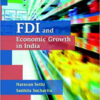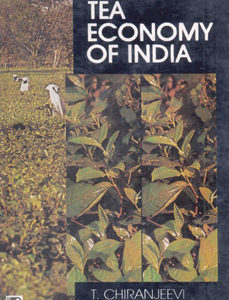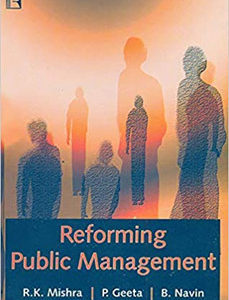MIGRATION IN INDIA : Links to Urbanization, Regional Disparities and Development Policies
₹1,495.00 Original price was: ₹1,495.00.₹1,196.00Current price is: ₹1,196.00.
25 in stock
There is a great dearth of a meaningful study on migration and urbanization in India. Most are descriptive; they are neither analytical, nor theoretical, nor policy-oriented. Filling up these lacunae, the book discusses acute problems of distressed migration and urban involution in India, focusing on five P’s: (a) patterns of migration, (b) phenomena of migration-urbanization system, (c) poverty, (d) processes, and (e) policies. The book has three parts: while the first deals with 1991 census, the second analyses 2001 census, and the third pinpoints future issues and challenges. It has analysed many aspects of migration-urbanization at six levels: all-India, district, state, class I city, million city and megacity. About 221 million people moved in 1991, swelling to 327 million by 2001 (out of one billion), i.e., every third Indian is a migrant. By 2011, their number has perhaps risen to 450 million! During 1991-2001 alone, 96 million people migrated. So, the study deals with the ebbs and flows of one of the largest numbers of migrants in the world, the greatest in the human history! It rightly emphasizes upon human dimensions of migration problems, lacking in most studies. It also unravels causal links between migration, urbanization and regional disparities, focusing on many burgeoning issues like poverty-induced migration, widespread rural poverty, urban decay, choking slums, rampant corruption, and widening social and regional disparities. Thus, the book envisages development policies and strategies, not only for the poor migrants, but also for the masses, for ushering in a just and egalitarian society. Such a seminal book is very relevant to the geographers, demographers, population specialists, economists, social scientists, urban and regional planners, management scholars and the policy makers.
Contents
1 Patterns of Migration in India
2 Nature of Migration and Urbanization in India
3 Migration Theory I: Socio-economic and Spatial Processes of Underdevelopment and Spatial Disorganization
4 Migration Theory II: Canonical Model
5 Findings of District-level Regression Analysis of Migration, Urbanization and Socio-economic Variables, 1991
6 Findings of District-level Factor and Canonical Analysis between Migration and Socio-economic Variables, 1991
7 Findings of State-level Factor and Canonical Analysis between Migration and Socio-economic Variables, 1991
8 Findings of Class I City-Level, Million City-level and Metropolitan Level Canonical Analysis
9 Summary of Findings: 1991 Census Situation
10 Patterns of Migration in India
11 Human Dimensions of Migration, Urbanization and Regional Disparities in India
12 Findings of District-level Analysis of Migration and Spatial Disparities, 2001
13 Findings of State-level Analysis of Migration and Its Links with Regional Disparities, 2001
14 Findings of Class I City-level Analysis
15 Findings of Million City-level Analysis
16 Findings of Metropolitan-level Analysis of Migration and Urbanization, 2001
17 Poverty and Mobility in India
18 Summary of Findings
19 Massive Illegal Immigration from Bangladesh and Its Adverse Consequences upon India
20 India’s Growing Population and Growing Economy
21 Major Issues in Migration, Urbanization and Regional Disparities in India
22 Future Development Policies and Strategies for Migration Planning, and Urban and Regional Development
| Author's Name | |
|---|---|
| Binding | |
| Release Year | |
| Language | |
| Publisher |
Related products
Business & management
Business & management
Business & management
REFASHIONING THE NEW ECONOMIC ORDER: Karnataka in Transition
Business & management
RESOURCE MANAGEMENT AND CONTOURS OF DEVELOPMENT: Reflections Through Macro-Micro Narratives
Business & management
Business & management
Business & management
COMPARATIVE ECONOMICS SYSTEMS: Culture, Wealth, and Power in the 21st Century
Business & management











